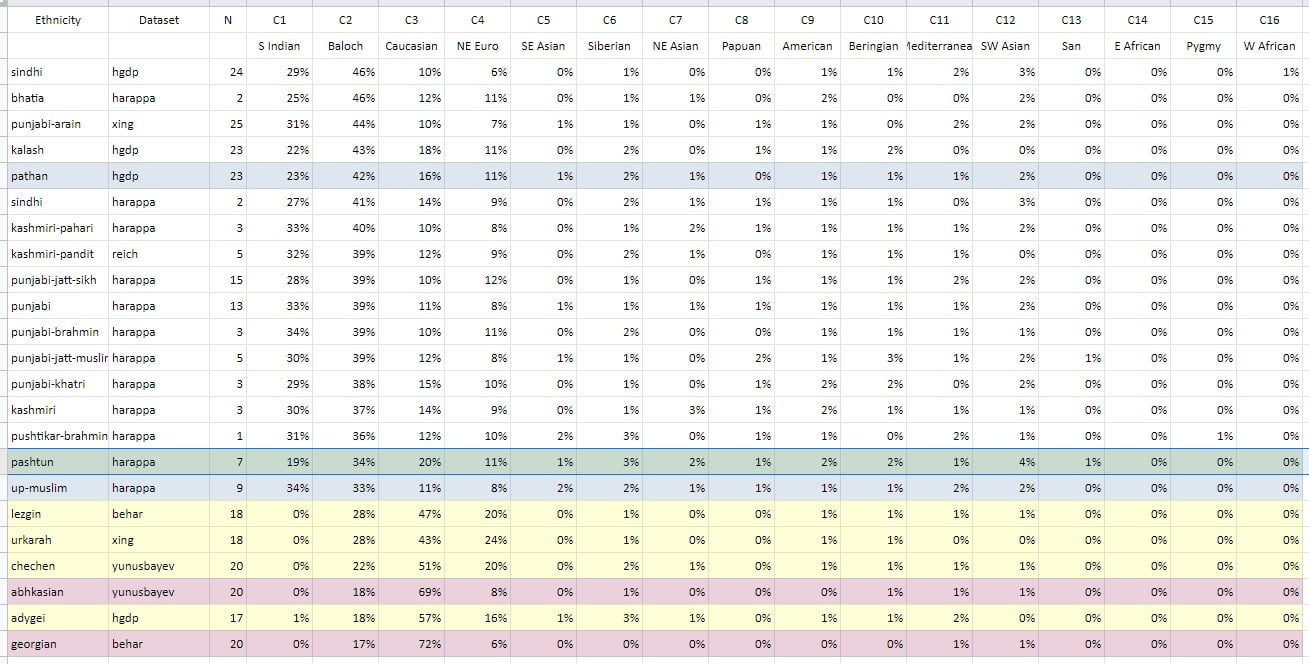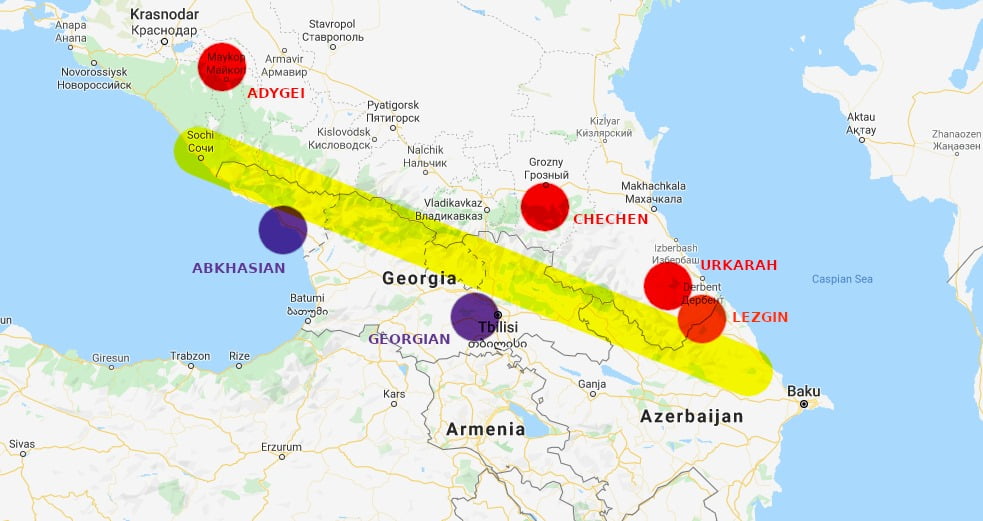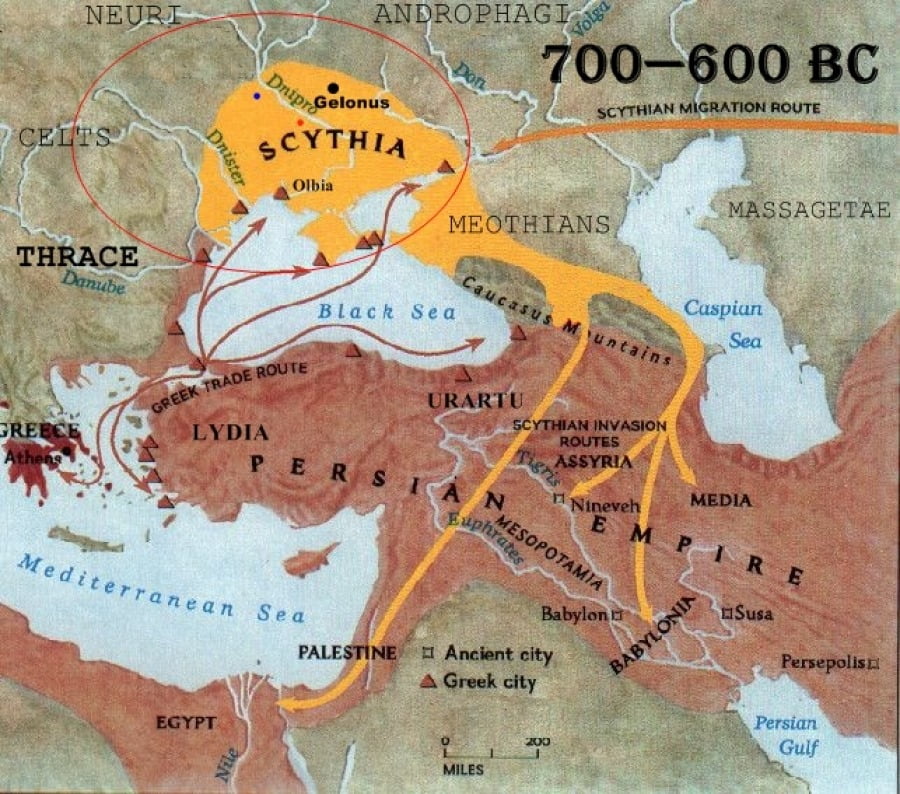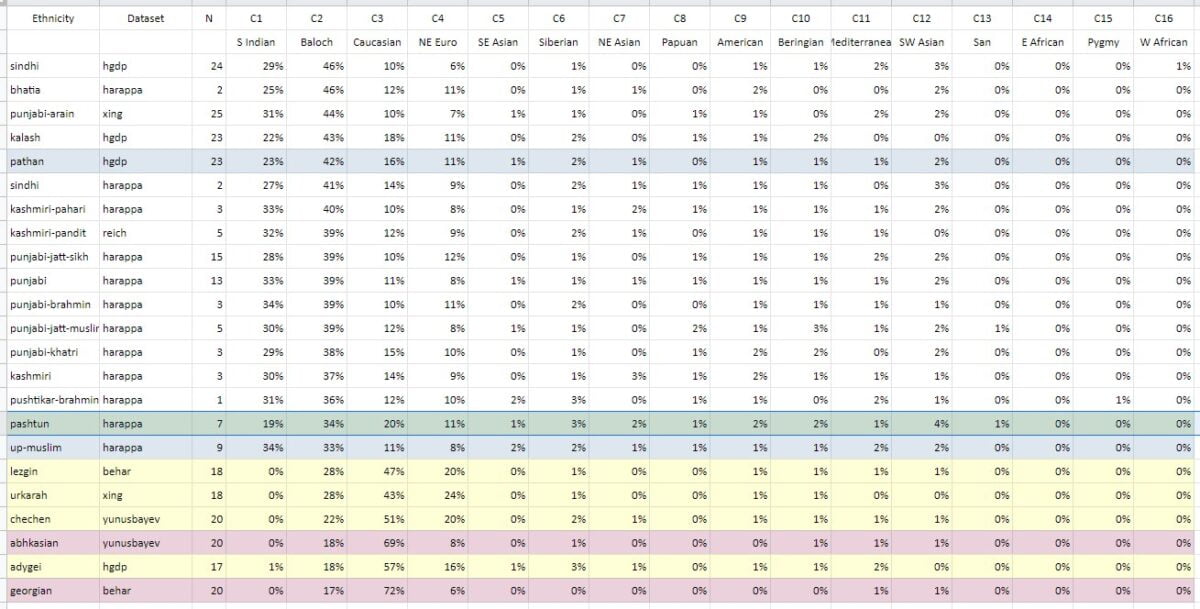


In attempting to determine the origin of the non-indigenous, i.e. Aryan, aspects of Pashtuns, and after concluding that oral historical accounts are mostly fairy tales, it dawned on me that by using a process of elimination with genetic admixture, I can largely make a determination.
Before I go further, I should note that, while the stories of lost tribes are quite fun, Abdali, a founding Pashtun supertribe, is quite likely synonymous for Hephtalite, also known as the White Huns.
https://en.wikipedia.org/wiki/Hephthalites
Moving on.
Pashtun genetic admixture is largely made up of S. Indian, Balochi, Caucasian, and N.E. European ethnicity, i.e. 19%, 34%, 20%, and 11% respectively.
This means that one can eliminate all ethnicities that have large (>4%) proportions of the remaining admixtures as they would show up in the Pashtun population were those an origin. They are not.
It is clear that the S. Indian admixture is native to the Indian subcontinent, evident not only by the fact that Indian ethnicities have the largest proportion of S. Indian admixture, but also by the fact that the closely related ethnicities to the Pashtuns that are further south towards India, those of the Pathans and the Uttar Pradesh Muslims, are slightly higher in proportion of S. Indian and Baloch admixtures and slightly lower in proportion of Caucasian and N.E. European admixtures.
So, if S. Indian admixture is native to India, then by looking at those of the remaining ethnicities that have no S. Indian admixture, one can assume that those populations are the origin of the Aryans that mixed into India, whose descendants are now the Pashtuns.
Coincidentally, these Aryan origin ethnicities, i.e. lezgin, urkarah, chechen, abkhasian, adygei, and georgian, all reside near each other in the Caucasus mountains.
And while that’s pretty good, upon further inspection, one can be even more specific, because, as it turns out, two of these ethnicities have less N.E. European admixture in their genetic composition than the Pashtuns, i.e. abkhasian and georgian have 8% and 6%, whereas Pashtuns have 11%.
As Pashtuns picked up S. Indian proportions in their admixture from India, their N.E. European proportion would decline, meaning that at origin, it would have had to be even greater than 11%. This makes the abkhasian and georgian ethnicities impossible candidates as Pashtun origin, as their N.E. European proportion is lower than the Pashtun N.E. European proportion.
This is also why the “out of India” theory is nonsense, as there is no S. Indian admixture in the Caucasus.
This leaves lezgin, urkarah, chechen, and adygei as plausible origins for the non-Indigenous Aryan component of Pashtun ethnicity. All have no S. Indian, some Balochi, and approximately double Caucasian and N.E. European.
https://en.wikipedia.org/wiki/Lezgins
https://en.wikipedia.org/wiki/Dargins
https://en.wikipedia.org/wiki/Chechens
https://en.wikipedia.org/wiki/Adyghe_people
One final point worth noting is that despite all caucasian ethnicities living close to one another, abkhasian and georgian ethnicities were able to maintain a higher Caucasian proportion and a lower N.E. European proportion in their admixture to their cousins because they are south of the Caucasus Mountains, which provided a formidable barrier from N.E. European invasion.
Thus, the non-Indigenous Aryan component of Pashtun ethnicity is from north of the Caucasus mountains.
